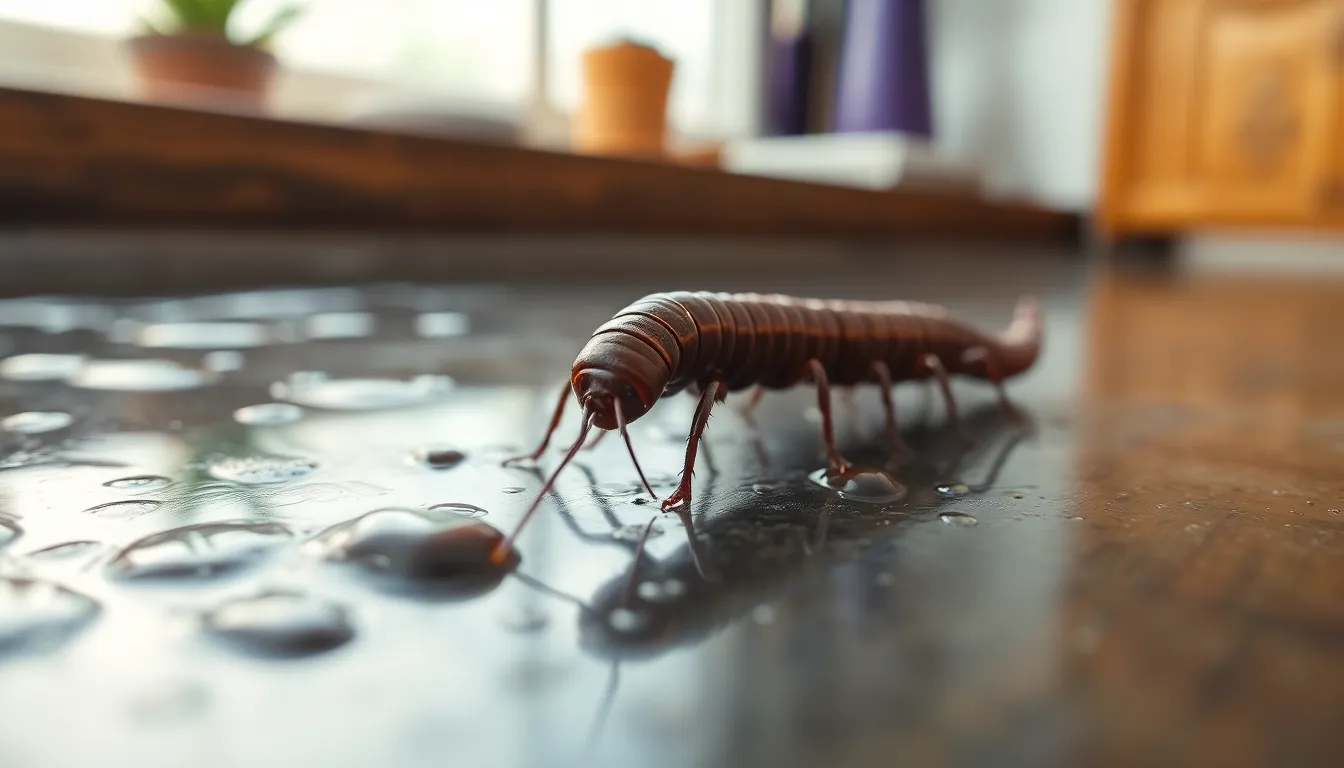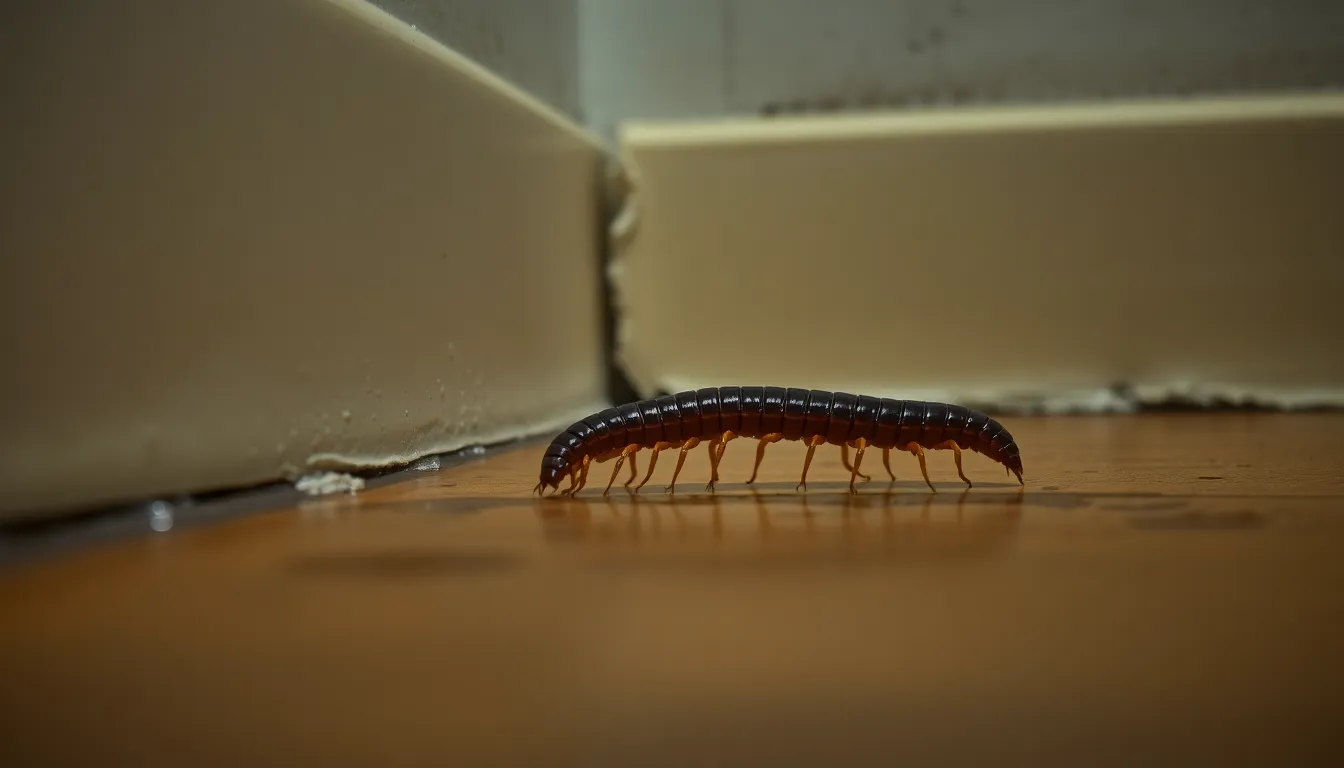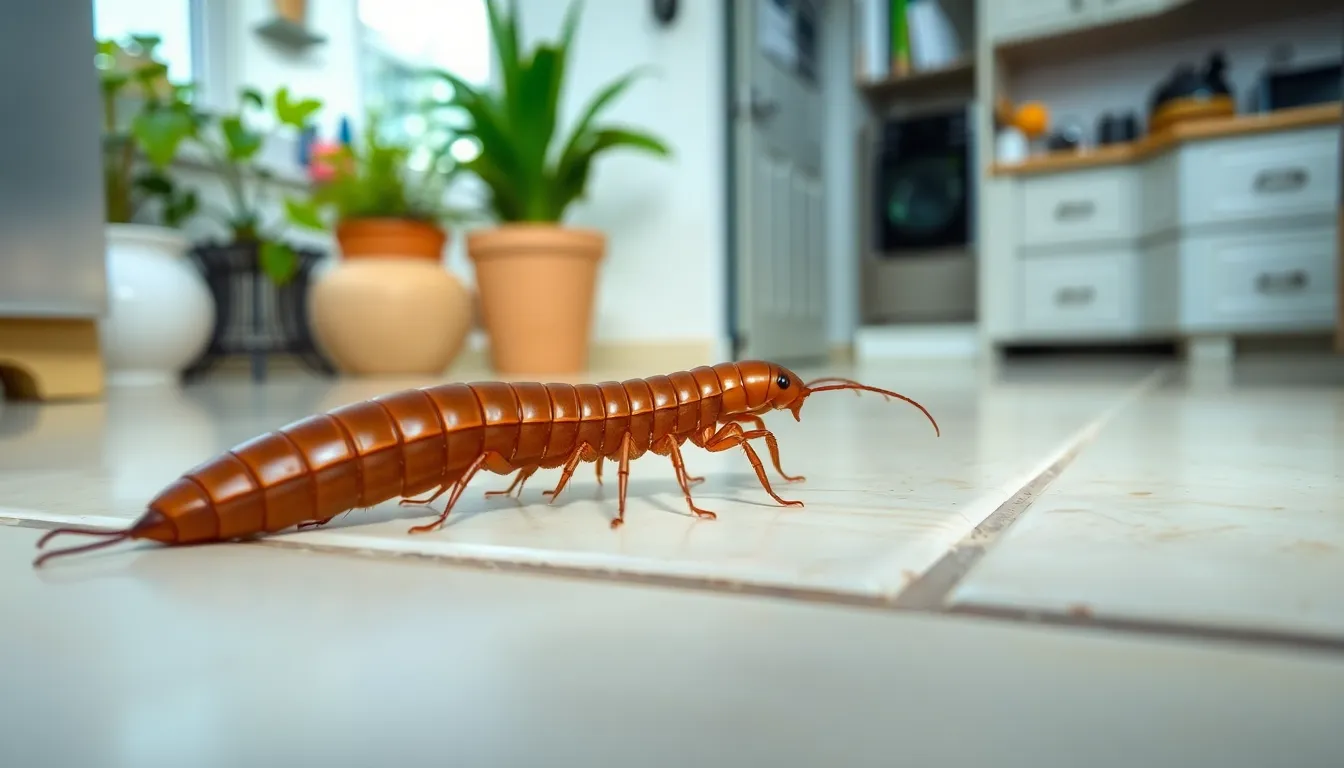Table of Contents
ToggleCentipedes might not be the guests you want at your home, but they sure know how to make an entrance. With their long, wiggly bodies and a flair for hiding in the most unexpected places, these creepy crawlies can send shivers down anyone’s spine. But don’t worry; they’re not here for a housewarming party. Instead, they’re on a mission to feast on your other pests, making them the uninvited heroes of your home.
However, when centipedes start to feel too comfortable, it’s time to take action. Understanding how to control these leggy intruders can save you from sleepless nights and surprise encounters in the bathroom. Dive into the world of pest control centipedes, where you’ll learn effective strategies to reclaim your space and maybe even chuckle a little along the way. After all, who knew pest control could be this entertaining?
Understanding Centipedes
Centipedes possess a unique and unsettling shape, often lurking in dark and damp places within homes. Understanding their characteristics and behavior helps inform effective pest control methods.
What Are Centipedes?
Centipedes are elongated arthropods belonging to the class Chilopoda. They feature segmented bodies with one pair of legs per body segment, generally possessing 15 to 177 legs, depending on the species. These creatures thrive in moist environments, often found under rocks, leaves, or damp wood. They primarily feed on insects, earning the title of beneficial predators in ecosystems. Their venomous bite can cause mild pain, but the risk to humans remains low with proper precautions.
Common Species
Several centipede species are prevalent in residential areas. The most recognizable include the house centipede, typically yellowish-brown with approximately 30 legs. Another common species, the stone centipede, often hides under stones and in soil, featuring a darker coloration. The bark centipede, known for inhabiting tree bark, exhibits a lighter shade with fewer legs. Each species plays a role in controlling pest populations, contributing to the balance of local ecosystems. Understanding these species aids in developing targeted pest control strategies to mitigate their presence indoors.
Why Centipedes Are a Problem


Centipedes can pose various concerns for homeowners. Though they often remain hidden, their presence indoors indicates a larger issue.
Potential Risks
Centipedes possess venomous bites, which can result in mild pain or swelling in sensitive individuals. They do not actively seek to harm humans but may bite when provoked. Allergic reactions may exacerbate the bite’s effects. Moreover, an infestation signifies excess moisture and insect populations, creating an inviting environment for additional pests. Entrapped food sources can attract these predators into living spaces, revealing underlying sanitation issues. Ensuing stress from frequent sightings may disrupt daily routines.
Signs of Infestation
Recognizing centipede infestations early aids in effective management. Observations of live centipedes or their shed skins often indicate an issue. Homeowners may notice dark, damp areas as they provide ideal hiding spaces. Small holes in walls or ceilings can also suggest centipede activity. Often, the presence of other pests like cockroaches and spiders serves as a precursor to centipedes appearing. Monitoring homes for occasional sightings along baseboards or ceilings highlights the urgency of addressing any burgeoning problem.
Effective Pest Control Methods for Centipedes
Managing centipede infestations requires a combination of preventative strategies, chemical options, and natural remedies. Each method plays a vital role in reducing their presence and ensuring a comfortable living space.
Preventative Measures
Secure entry points to prevent centipedes from entering homes. Sealing cracks and gaps around windows, doors, and foundations stops their access. Maintaining low humidity levels also dissuades these creatures, as they thrive in moisture. Regularly cleaning and decluttering eliminates hiding spots and food sources for insects that attract centipedes. Removing debris, mulch, and leaf litter from around the house creates an unfriendly environment for them.
Chemical Control Options
Utilizing insecticides specifically designed for centipedes offers an effective solution. Choose products that contain active ingredients proven to target centipedes. Application in areas where they frequent, such as basements and crawl spaces, enhances effectiveness. Always follow label instructions to ensure proper usage and safety. Residual sprays and foggers can provide longer-lasting protection against infestations. Seek professional pest control services if the problem persists despite using these methods.
Natural Remedies
Employing natural remedies can effectively deter centipedes without harmful chemicals. Diatomaceous earth acts as a natural insecticide, causing dehydration upon contact. Sprinkling it in potential entry areas helps reduce their populations. Essential oils, such as peppermint and tea tree, work well when diluted and sprayed around entry points. Keeping the home clean and free of food particles discourages other pests, further reducing centipede attraction. Regular ventilation in damp areas prevents moisture buildup, making the environment less hospitable for centipedes.
Professional Pest Control Services
Professional pest control services offer specialized solutions for managing centipede infestations. Engaging experts can ensure effective eradication, contributing to a safer home environment.
When to Seek Help
Recognizing the signs of a significant centipede infestation is crucial. It’s time to seek professional assistance if sightings increase or if other pests appear, signaling potential environmental issues. Homeowners observing symptoms like repeated bites or excessive moisture indoors should prioritize immediate intervention. Waiting too long may heighten the likelihood of larger pest problems developing. Consulting with pest control professionals provides access to targeted strategies tailored to specific conditions and needs.
Selecting the Right Service
Choosing the right pest control service requires careful consideration. Research local companies that specialize in centipede management and check for industry certifications. Verification of customer reviews and success rates aids in identifying reputable providers. Additionally, ask about the chemical treatments and methods used. Eco-friendly options appeal to many homeowners. Comparing estimates and service offerings ensures informed decisions. Targeting the right professional contributes significantly to effective pest management and peace of mind.







